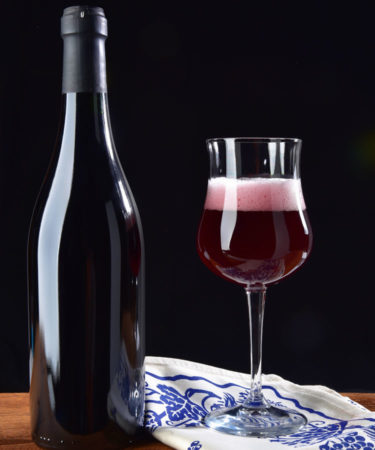“Good Lambruscos are almost always going to be in the $20 to $30 range,” Keith Beavers, wine professional and VinePair columnist, says as I set up a Lambrusco blind tasting.
He’s right. Our panel immediately pans three cloying, $11-ish bottles in rapid succession.
Beavers’ wisdom goes against persistent misconceptions about Lambrusco, the sparkling red wine from Emilia Romagna, Italy. Many Americans associate Lambrusco with inexpensive, teeth-achingly sweet juice made famous by the brand Riunite in the 1970s and 1980s. (According to the American Association of Wine Economists, in 1981, America’s top three imported wines were all Lambruscos, with Ruinite in the No. 1 spot.) Riunite Lambrusco currently retails from $7.50.
“The story of how Lambrusco earned sneers is an old one and hardly bears repeating,” Eric Asimov writes in The New York Times, “except that many people are still stuck on the notion that Lambrusco is sweet, fizzy, and mildly alcoholic.”
In reality, the category contains multitudes. More than 60 types of grapes from villages in Emilia Romagna can be used to make Lambrusco. In certain areas, winemakers are eschewing the Charmat method used for sweet and bulk wine, and re-embracing traditional, in-bottle fermentation. Lambruscos can be dry and acidic, like those grown in the sandy soils of Sorbara; or dark-hued and deeply tannic, owing to a late harvest and clay terrain.
Such distinctions have existed for millennia. Now, more nuanced Lambruscos are available stateside and worldwide. We tasted several bottles to determine these stalwart picks. Here are six of the best Lambruscos available in the U.S. now.
6. Moro Rinaldini Lambrusco Reggiano Secco NV
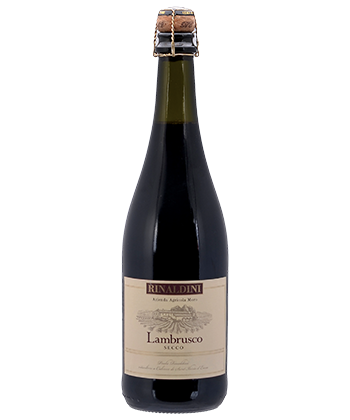 An exception to our $20 guidepost, this modestly priced bottle hails from Reggio Emilia, a region west of Modena and renowned for Parmigiano Reggiano cheese. The bright, strawberry-scented wine balances its fruit with a slightly tart palate and lots of acid. We’d love to pair this with the region’s signature cheese, or a hearty serving of tortellini en brodo. Average price: $13.
An exception to our $20 guidepost, this modestly priced bottle hails from Reggio Emilia, a region west of Modena and renowned for Parmigiano Reggiano cheese. The bright, strawberry-scented wine balances its fruit with a slightly tart palate and lots of acid. We’d love to pair this with the region’s signature cheese, or a hearty serving of tortellini en brodo. Average price: $13.
5. Vigneto Saetti Lambrusca dell’Emilia I.G.P., 2016
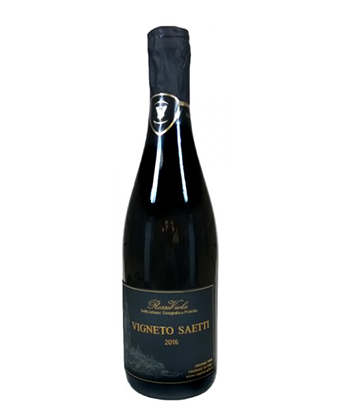 Dark fruits are balanced by savory, earthy flavors in this sophisticated sparkler. “I want a cheese plate,” commented one taster, and rightly so: The Saetti would play beautifully off Parmesan, salumi, and other salty starters. We would also love it with a big bowl of carbonara. Average price: $20.
Dark fruits are balanced by savory, earthy flavors in this sophisticated sparkler. “I want a cheese plate,” commented one taster, and rightly so: The Saetti would play beautifully off Parmesan, salumi, and other salty starters. We would also love it with a big bowl of carbonara. Average price: $20.
4. Medici Ermete Lambrusco Concerto Reggiano, 2016
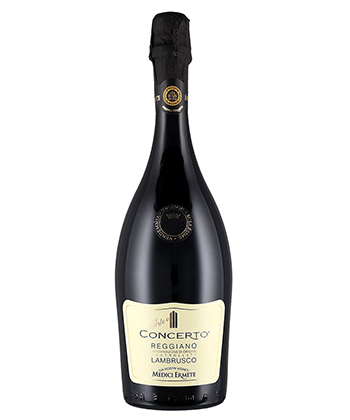 This 100 percent Salamino pick was reportedly the world’s first single-vineyard Lambrusco, and remains a critical darling for its bright, frothy flavors. Look for red berries and citrus peel on the nose, followed by a crisp palate and dry finish. Average price: $19.
This 100 percent Salamino pick was reportedly the world’s first single-vineyard Lambrusco, and remains a critical darling for its bright, frothy flavors. Look for red berries and citrus peel on the nose, followed by a crisp palate and dry finish. Average price: $19.
3. Cleto Chiarli Vecchia Modena Premium Lambrusco di Sorbara, 2016
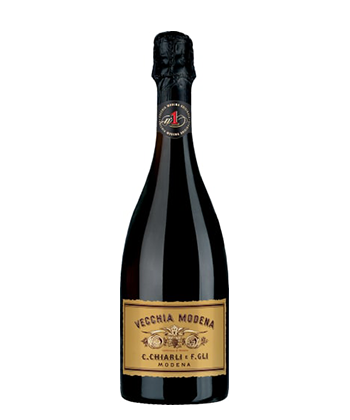 This 1860 winery makes Lambrusco with estate-grown grapes from Sorbara. Our panel was struck by the wine’s “stunning” ruby-red color. A fruity, spicy bouquet of red berries and cinnamon gives way to a zesty, vibrant, and almost creamy palate with notes of ginger. The long finish is crisp but has the faintest hint of sweetness, making it an excellent foil for everything from cheese boards to dim sum. Average price: $16.
This 1860 winery makes Lambrusco with estate-grown grapes from Sorbara. Our panel was struck by the wine’s “stunning” ruby-red color. A fruity, spicy bouquet of red berries and cinnamon gives way to a zesty, vibrant, and almost creamy palate with notes of ginger. The long finish is crisp but has the faintest hint of sweetness, making it an excellent foil for everything from cheese boards to dim sum. Average price: $16.
2. Vigneto Saetti Lambrusco Salamino di Santa Croce, 2017
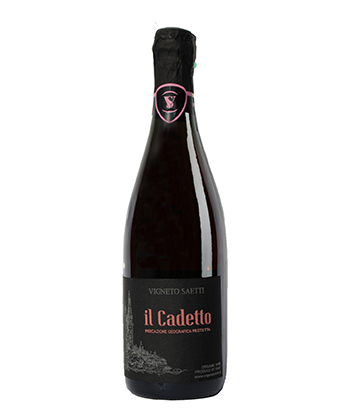 A gold standard of approachable, balanced Lambruscos is this crowd-pleaser from Saetti. It pours a lovely, deep garnet color and has a bright, bracingly dry finish. It’s remarkably versatile, and our panelists could see it working at aperitif hour as well as with roasted root vegetables, hearty stews, and other winter main dishes. Average price: $19.
A gold standard of approachable, balanced Lambruscos is this crowd-pleaser from Saetti. It pours a lovely, deep garnet color and has a bright, bracingly dry finish. It’s remarkably versatile, and our panelists could see it working at aperitif hour as well as with roasted root vegetables, hearty stews, and other winter main dishes. Average price: $19.
1. Cantina Della Volta Lambrusco di Modena Spumante Rosso, 2010
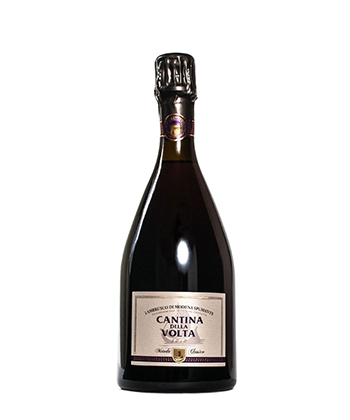 Nuanced and elegant, “this is what you want Lambrusco to be,” one taster said. The raspberry-colored sparkler has a round character, with balanced fruit, acid, and minerality plus the slightest bitter note on the finish. The price point is higher than others on our list, but, in Emilia Romagna, as in life, you get what you pay for. Average price: $28
Nuanced and elegant, “this is what you want Lambrusco to be,” one taster said. The raspberry-colored sparkler has a round character, with balanced fruit, acid, and minerality plus the slightest bitter note on the finish. The price point is higher than others on our list, but, in Emilia Romagna, as in life, you get what you pay for. Average price: $28
